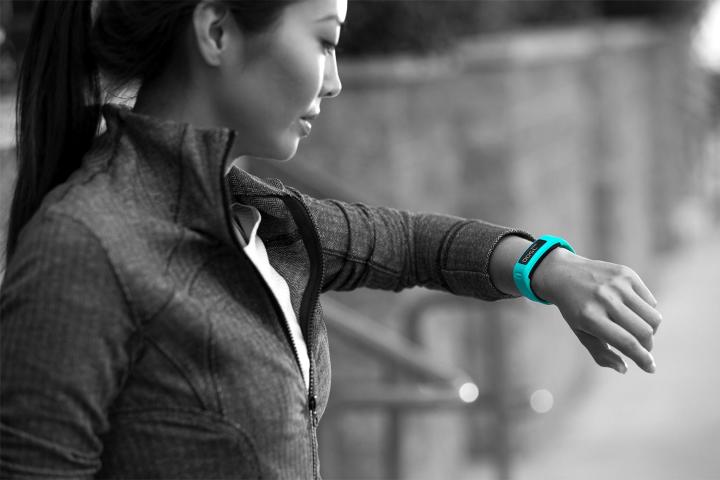
Modern wristwatches – the dumb ones – are already modular, in that bands and watch faces are easily interchanged. Even this limited modularity brings an appealing sense of transformability that is so often missing from our modern gadgets.
A simple band swap adds a lot of versatility to a product designed to be worn all day (and in the case of sleep trackers, night). With different bands come different styles for different events, different comfort levels and different materials, so don’t have to, say, wear your nice new leather watch for a sweat-filled five-mile run — I’ve tried it, it’s not pretty. Nor is attempting to clean it after the fact.
This was one of (granted, a large number of) design flaws in the first Galaxy Gear. Fixed bands mean you’re stuck with one color scheme for the lifetime of the watch. That’s far more of a sticking point for a device designed to be worn on your body, than a device meant to be stuffed in a pocket. Removable bands mean more versatility for the user and a steady stream of profit from accessories for the company.
Honestly, I wouldn’t be too shocked if you told me, a year from now, that Apple was making more money off of accessories than actual Apple Watches.
A simple band swap adds a lot of versatility to a product designed to be worn all day (and in some cases, night).
Seeing as how we’re still in the early days of wearable consumer electronics, it’s likely that we’ve only scratched the surface of product adaptability. A smartwatch is, at its heart, a small square with a screen that houses some tightly packed electronics — a potentially extremely adaptable product.
Garmin’s Vivofit line drives home this point. Popping the display out of the band makes you realize what’s at the heart of these products when stripped of their bands. It’s like that scene in Return of the Jedi when you realize that, beneath all of that cool black armor, Darth Vader is really just an elderly bald man playing the harmonica. Paired with the dozens of different bands the company offers, the Vivofit can become a completely different thing entirely.

Misfit’s Shine takes this idea to a compelling extreme. It’s a device that’s essentially a little metal (plastic, in the case of the Flash) pebble that slots into various different wearable form factors, including a wristband, a necklace and a simple clip. The product is, perhaps, a bit more liberated to adapt given its lack of display; it’s just a bundle of sensors and transmitters.
The Misfit devices may well have been a bit ahead of their time. A standalone pebble from a startup no one has heard of is a bit of a tough sell without more accessible products for context. Consider, however, the possibility of Apple or Samsung offering a similarly adaptable product after smartwatches are familiar and boring. It will feel like a breath of fresh air.
It’s likely that we’ve only scratched the surface of product adaptability.
The other key, of course, is ensuring adaptability doesn’t sacrifice functionality. The other trouble with the Misfit Wearable was that fact that, at the end of the day, it didn’t do all that much. Devoid of a display and specialized sensors, an activity tracker is a hard sell when it doesn’t really do much more than your smartphone.
But a fully modular wearable could have sensors added to it, like Google’s Project Ara smartphones. They could essentially serve as additional additional eyes and and ears, gathering additional information to feed into the wearable and ultimately into your phone. It’s a logical next step in the evolution of the wearable space.
Imagine expanding that functionality to different parts of the body with different sensors, and you can clearly envision a wearable future that extends well beyond the simple smartwatch.

